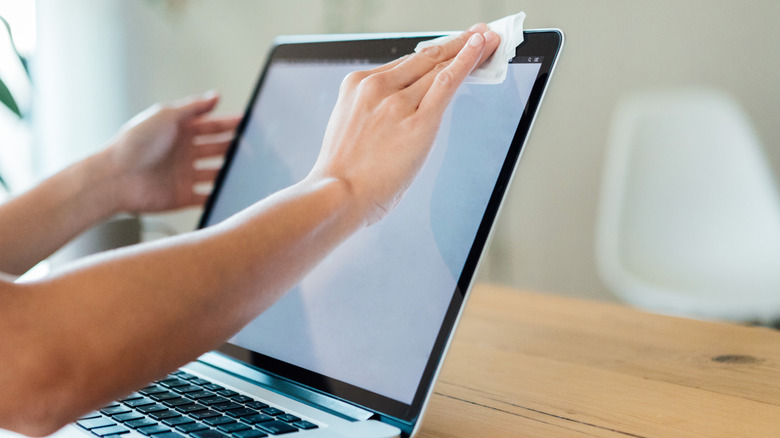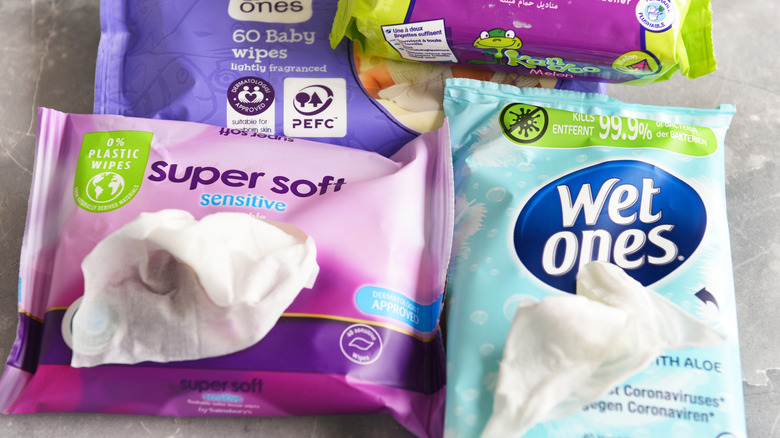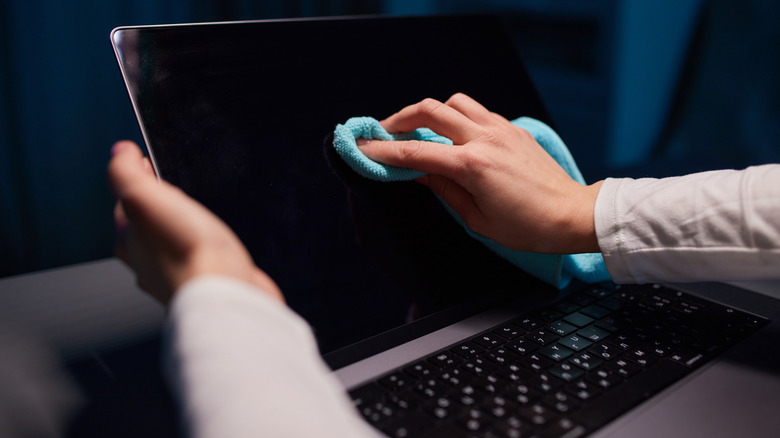Can You Use Any Cleaning Wipe On Your Laptop Screen? Here's What You Need To Know
We may receive a commission on purchases made from links.
Laptop screens are gunk magnets that attract all sorts of contaminants, such as dust, stains, and fingerprints, which makes it hard to focus on the screen's content. You definitely want to get rid of them, however, can you use just any cleaning wipe on your laptop screen? They may remove the various smudges and debris, but they could also be subtly damaging it.
The answer to cleaning your display correctly largely depends on the wipe and your laptop screen. Strong chemicals in certain wipe may damage the LCD's anti-glare or fingerprint-resistant coatings (meaning you have to clean it more often) and leave visible patches on the display. Contrary to this, glass-based screens present on some laptops are way more robust and can handle a variety of cleaners. So, how do you know what works the best for your screen in the quest to fight filth? We've got some tips that will leave your displays spotless.
The correct way to use a cleaning wipe
As a general rule of thumb, you should avoid a few key errors while cleaning a laptop screen. First, don't let any liquid seep into the crevices and settle on the electronics under the hood. Liquids and electronics don't pair well and can lead to short-circuits, potentially killing the display. While using a cleaning wipe, make sure it is not too damp. You may squeeze it to get rid of the excess liquid.
Next, avoid any harmful chemicals such as alcohol or ammonia-based solutions, as these can permanently damage your screen's texture and you may need screen replacements to fix the damage. The easiest way is to check for the wipe's contents and refrain from the alcohol or ammonia-based ones.
Finally, steer clear of anything that might scratch the screen. All paper-based wipes pose the risk of micro-scratches as they use wood as their primary ingredient and may cause minute abrasions. These scratches won't be visible to the naked eye during the first use, but they can gradually grow with prolonged usage.
You may think you're okay using fragrance-free, water-based, or sensitive baby wipes to clean your LCD screens. While these are extremely gentle on the skin, they can still cause micro-scratches over time.
The best way to clean your laptop screen
A good old microfiber cloth and some tap water work wonders when cleaning a laptop screen. Here's how you can easily clean your laptop screen the right way:
- Dip your microfiber cloth in water and squeeze out the excess water.
- Shut down your laptop and disconnect the charger.
- Now, gently rub your screen in a circular motion without applying any unnecessary pressure on the display.
- Wait until the screen is dry before you turn on the laptop.
That's all that you need to clean the dirtiest of the screens while avoiding screen damage. While the sensitive baby wipes won't cause immediate damage, they are both damaging and costlier than using a regular microfiber cloth in the long run. You may go for a round two on the stubborn stains, but avoid excess pressure as it may damage the pixels in your LCD screen. Moreover, regularly cleaning your screen with a dry microfiber cloth is a game changer for avoiding regular gunk turning into stubborn menaces.
While a cleaning wipe kept on your desk might seem like the easier option to finish the seemingly unimportant task of junk cleaning, you should avoid them to ensure your screen's longevity.


